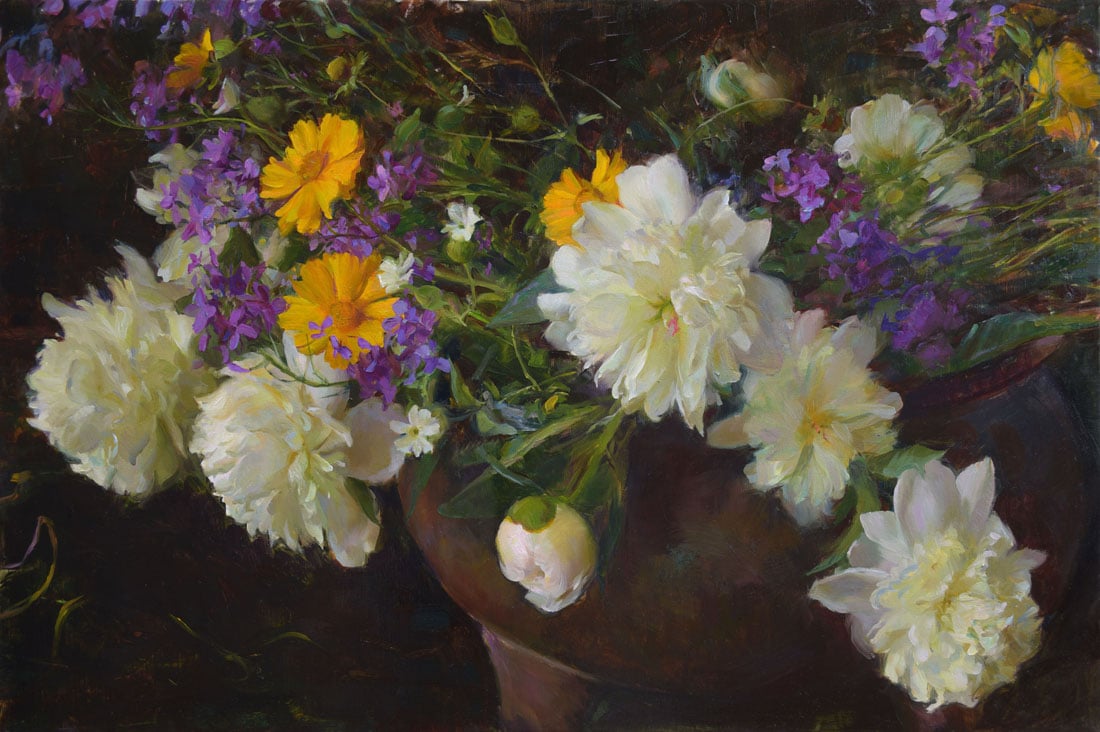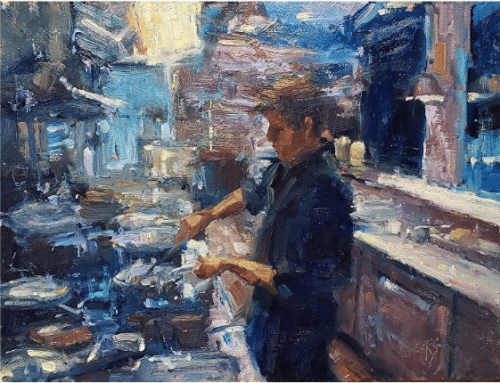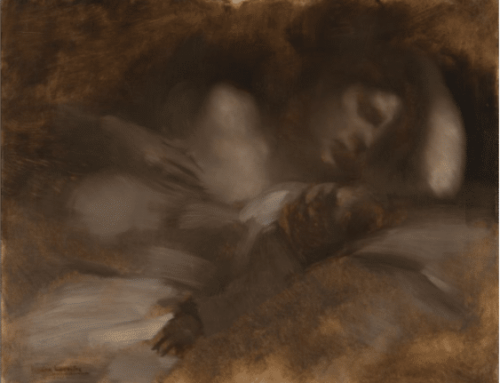How do you choose your colors? Beyond accuracy, what is color’s role in your paintings?
What makes color “work” in some paintings better than in others? Obviously, mixing to match what you see (while challenging in itself) is only half of the story of color, and to me at least it’s the least interesting half at that. Color does more than represent reality; it also plays into mood and “key,” setting the tone for emotion, meaning, and the overall harmony or dissonance of your work.
These terms come from the world of music. You can think of the colors in a painting like the notes in a musical composition: Will you compose in a major or a minor key? Will you choose the quick, plucked strings of a violin or the sonorous hum of bowed violas and cellos?
Will you scatter bright dabs of Indian yellow like high-pitched picolo trills – straight out of the tube? Or mix slow, shadowy washes from ultramarine violet, Payne’s gray, and burnt umber like lower-pitched notes in the bass register? Will your color notes “make sweet music” or ring like the sunken bell on a forgotten ship beneath oceanic waves?
Though it isn’t a requirement, many artists begin by mentally selecting a color palette and/or mixing several pools of color before they start the painting. Their choices may be intuitive or they may be informed by theories about complementary or split complementary color schemes, etc. There are many sources for great color instruction readily available these days.
Color Notes
It can be helpful to analyze the color schemes of paintings you like. Are we dealing with many different colors or just a few colors in different shades? Where are the brightest notes? What are the relative warms and cools are doing, and what are the proportions of each color to the others? How much dark is there and how much light? Does one color predominate while others play supporting roles?
Most importantly of all, how does each color-placement “call the eye” as the viewer moves through the painting?
You can learn a lot by asking these kinds of questions, but you can learn a lot by playing – and falling in love with it. There’s great fun in color! Don’t miss out on the joy of simply mixing and watching what happens when one color sits next to another. I sometimes feel like an alchemist in a laboratory when I mix, combining elements in search of amazing things.
“It is all about having a passion for color,” says painter Ken Kewley. “This passion gives one an unlimited vocabulary. Color is used to create steps to direct the eye around the painting parallel to the vision of the artist.”
“Along the way, like a songwriter rhyming words that do not really rhyme, we invent color relationships to get at the surprising juxtapositions that are found in nature. It is a way of staying excited, staying in love.”




